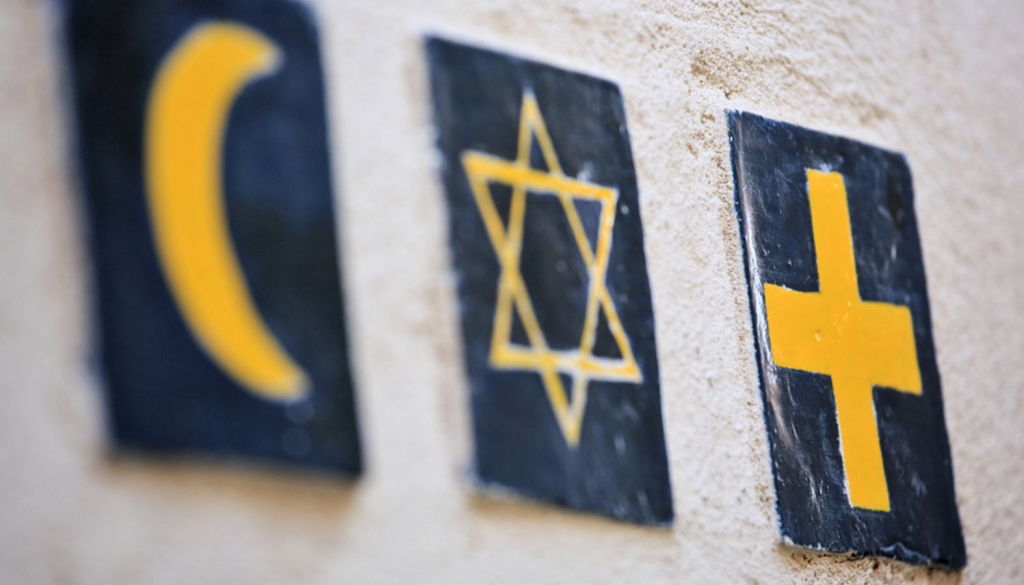Recently I was asked to be on a panel of leaders from various faiths for a regional youth event at the local Church of Jesus Christ of Latter-day Saints. As I arrived the building was abuzz with youthful energy. A few hundred young people, some who had woken up as early as 5 a.m. to make the drive with their youth groups, were gathered for a day of teaching, prayer, and service.
Their theme for the day was “Won’t You Be My Neighbor?” The theme was perfect for our part of the day as well as the moment we find ourselves in culturally. The church we were gathered at is literally neighbor to some of the panelists, right up the street from our local Islamic Center, and is ever more connected to and a driver of local service and interfaith activity.
We saw the teens in groups of about 100 at a time because there were so many they couldn’t fit in the space all at once. As the young people filtered in for the first conversation, I was struck at how similar the gathering felt to every Catholic youth event I’ve been a part of: loud kids, quiet kids, nerdy kids, cool kids, and a few sleepy kids (I’m guessing they were part of that 5 a.m. crowd).
We panelists were taking our seats at the same time. I was seated next to a woman who is a Quaker. Next to her was a Muslim college chaplain, and on the end was a woman from the Jewish Federation. One thing I love about being involved in interfaith activities is that they always get me thinking about what’s distinct about our different faiths and what we hold in common.
All of us seek to follow God’s will. We each have a sacred text. At this particular event all the faith leaders were from Abrahamic traditions (those faiths that have Abraham as a common spiritual ancestor: Judaism, Christianity, and Islam) and many of our teachings and scriptures are shared or have common roots. Each of these traditions also shares the belief in one God.
The young people were wonderful and asked great questions:
- What’s something you love about your own tradition?
- Where do you see commonalities between your faith and ours?
- Name something people often misunderstand about your practice or beliefs.
- What is your faith’s position on evangelization?
- What does your worship space look like?
Each discussion was different from the one before as the young people raised different questions, and their questions sparked new thoughts among the panelists. The conversation was honest, vulnerable even. A big part of that was because of the tone set by our moderator.
The panel’s host introduced the conversation by telling a story about Krister Stendahl, a Swedish theologian and scholar who served as the dean at Harvard Divinity and later became bishop of Stockholm. Our host outlined for the young participants Stendahl’s three rules of religious understanding:
- When you are trying to understand another religion, you should ask the adherents of that religion and not its enemies.
- Don’t compare your best to their worst.
- Leave room for “holy envy” (be willing to recognize elements in the other religious tradition or faith that you admire).
I found myself wishing that more Catholics could be a part of open conversations like the one we were experiencing. Listening to the other panelists talk about their faith traditions and hearing the young people ask earnest, challenging questions of us definitely left me with some “holy envy.” The Quaker woman talked about her tradition’s uncompromising commitment to nonviolence. The Jewish woman described the family rituals and prayers to open and close the Sabbath. The Muslim man talked about praying wherever you are. Many Catholics are unaware of our own teachings around interfaith dialogue and that the last three popes have all had a great dedication to furthering interfaith understanding.
I also found myself wishing that all people could take hold of these three rules. What if we talked more with the people who practiced these faiths rather than just taking at face value what is said about them in media and pop culture? What if we sought more to understand and were slower to accuse and judge. What if we looked more at the beauty of other traditions and at the same time were more honest about the problems within our own?
The conversation left me with a lot to reflect on. How can I be neighbor to those whose religions are frequently misrepresented? And how can I be neighbor to those in my own Catholic tradition who haven’t had the privilege of these interfaith conversations? I heard afterward from one of the adult leaders. He e-mailed the panelists to thank us and shared that one of the youth who attended the event walked up to the front of the congregation the next day and spoke about how meaningful the panel discussion was to him. I absolutely agree.

